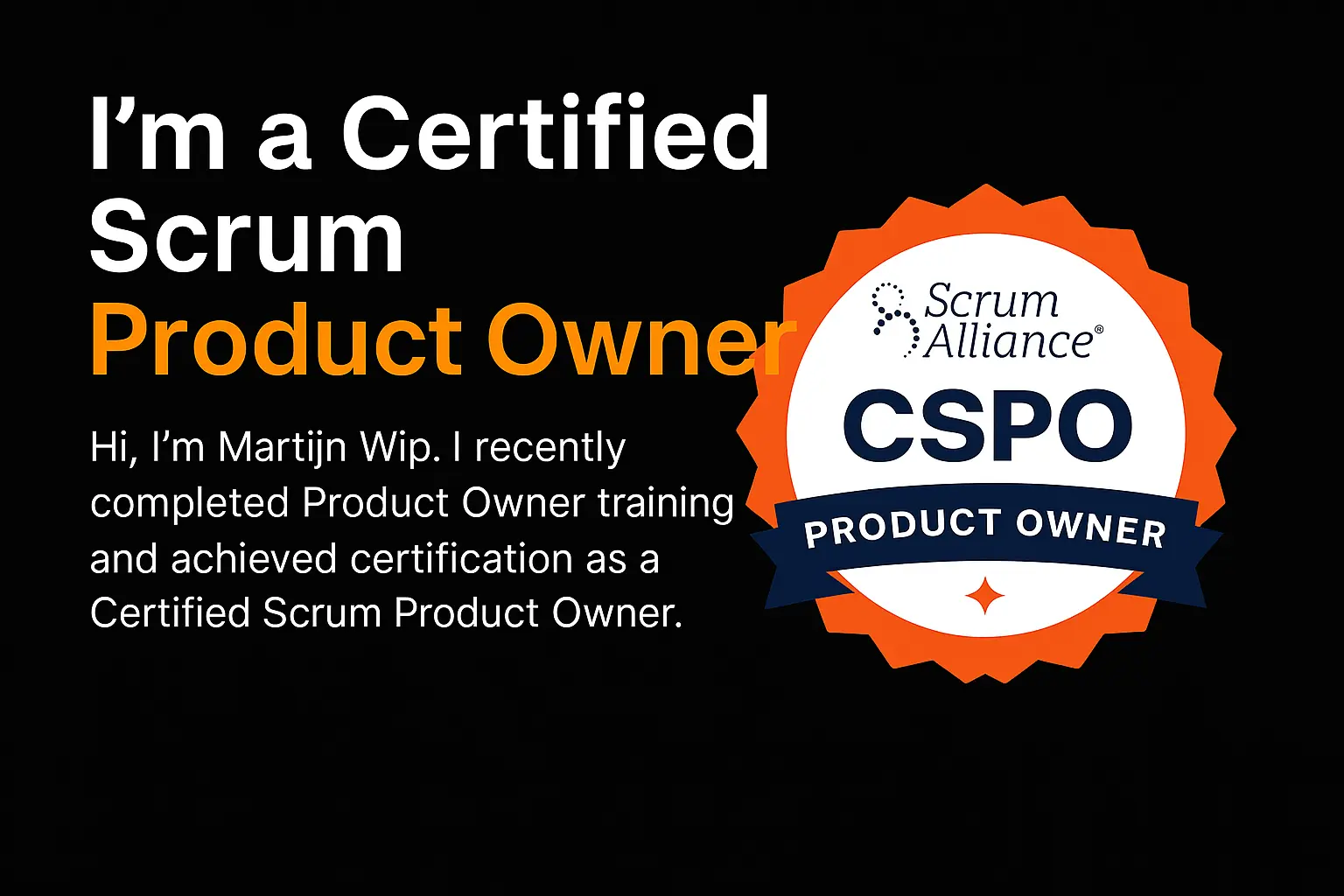From Code to Customer Value: My CSPO Journey

January 29, 2025
Last month, I completed the Certified Scrum Product Owner (CSPO) training at Reaktor in Amsterdam and earned my certification. As someone with a technical background, stepping into product ownership felt like learning a new programming language—familiar concepts with different syntax and entirely new ways of thinking about problem-solving.
Why CSPO?
Working in tech, you quickly realize that building software isn't just about writing clean code or architecting scalable systems. The most elegant technical solution means nothing if it doesn't solve real user problems or deliver business value. The CSPO certification bridges that gap between technical execution and strategic product thinking.
The Product Owner role is essentially the API between stakeholders and development teams—translating business requirements into actionable user stories while maintaining technical feasibility and prioritizing features based on value delivery.
Key Takeaways from the Training
1. Backlog Management ≠ Feature Factory
One of the biggest revelations was understanding that a product backlog isn't just a glorified todo list. It's a dynamic, prioritized collection of hypotheses about what will create customer value. Each user story represents a bet you're making about user behavior and business outcomes.
2. Stakeholder Communication as System Design
Managing stakeholders requires the same systematic thinking as designing distributed systems. You need to understand dependencies, manage communication protocols, and handle conflicting requirements—just like managing microservices interactions.
3. Data-Driven Decision Making
The training emphasized using metrics and user feedback to guide product decisions, much like how we use monitoring and logging to guide technical decisions. Product owners need their own version of observability.
Practical Applications
Since completing the certification, I've been applying these concepts to:
- Sprint Planning: Treating user stories like API contracts—clear, testable, and outcome-focused
- Stakeholder Management: Using the same communication patterns that work for technical documentation
- Product Vision: Creating technical roadmaps that align with business objectives
Technical Skills Still Matter
What I appreciated about the CSPO approach is that it doesn't diminish technical expertise—it amplifies it. Understanding system architecture, technical debt, and engineering trade-offs makes you a more effective product owner. You can have informed conversations about technical feasibility while keeping the focus on user value.
Next Steps
The CSPO is just the beginning. I'm planning to pursue the Advanced CSPO (A-CSPO) certification and continue exploring how technical background can enhance product ownership. There's also the whole ecosystem of complementary skills—user research, data analysis, and market validation—that build on this foundation.
If you're a developer or engineer considering the product ownership track, I'd recommend it. The skills complement each other in ways that make you more effective in both domains.
The CSPO training was delivered by Reaktor's excellent trainers who brought real-world experience from building digital products at scale. If you're in Amsterdam and looking to level up your product skills, I'd definitely recommend checking out their training programs.